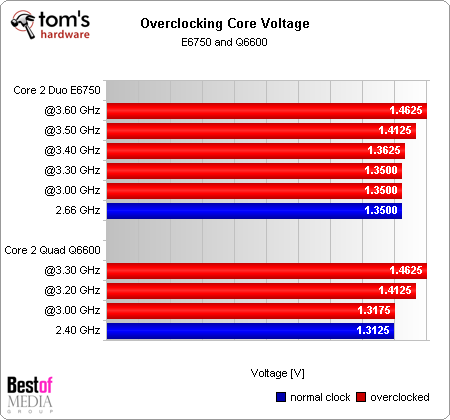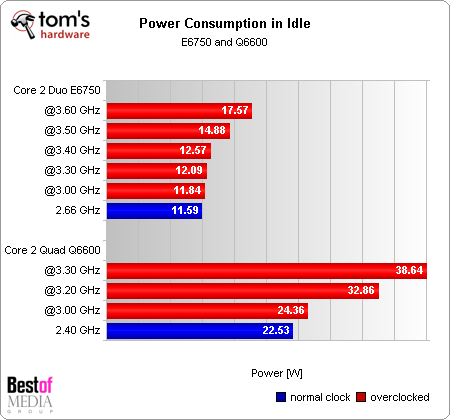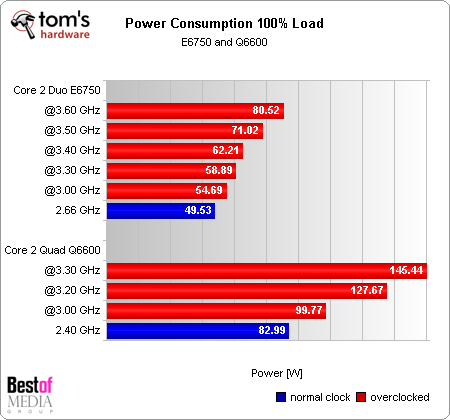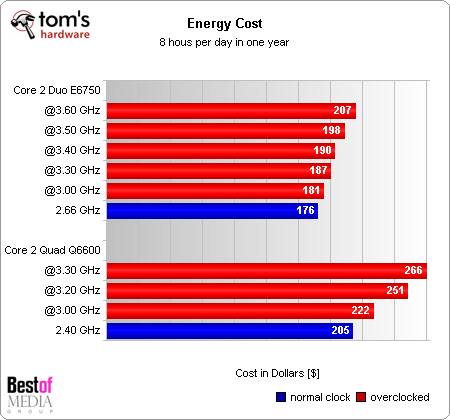Overclocking: Dual- vs. Quad-Core CPUs
Overview Of Core Voltages
Below you will find a table detailing the core voltage settings required to reach a certain clock speed on each of the processors.
As you can see, the quad-core CPU is unable to reach the same overclocking levels as its dual-core sibling, despite using very high core voltages. Bear in mind that the Q6600 also combines two dual-core chips in one CPU package, though.
Power Consumption And Energy Cost - Less Is More With Dual-Core
For our overall result, the consideration of these systems' power consumption plays a major role. Since we had to increase the core voltage quite a bit during our overclocking experiments, this has a huge impact on a CPU's power dissipation, which increases dramatically.
With both CPUs overclocked to their limit, the dual-core chip's power consumption increases by 51.6%. Our quad-core's results are a little higher, increasing by 58.3%.
Once both CPUs are put under a full load, the difference in power consumption between our two candidates becomes much more pronounced. While the dual-core model needs 62.6% more energy under load at its maximum clock speed, the quad-core draws a full 75.3% more compared to its default speed.
Energy Cost
In the end, the cost of an affordable overclocking system is not determined solely by the price of its individual components. The added performance goes hand in hand with higher power consumption, which is a price you pay in the form of your electric bill at the end of the year.
We base our calculations on an average usage scenario during which the computer runs for eight hours per day. Our measurements represent the entire system's power consumption, including the power supply, graphics card and sound card, as well as the hard drive and the DVD-ROM. Since we are interested only in the power consumption of the processors, the graphics card is idle in all measurements.
A Core 2 Duo E6750 will cost you about $176 in electricity over the course of a year when running under load for eight hours a day. Fully overclocked, it will cost you an additional $31.
The bill is much higher for the Intel Core 2 Quad Q6600. Compared to its dual-core sibling, it eats about $29 worth more electricity, or $205. Full overclocking does its part to drive the cost up even more, increasing the bottom line on your utility bill by another $62, for a total of $266.
Current page: Overview Of Core Voltages
Prev Page Overclocking III - Quad-Core Q6600 At 3.30 GHz Next Page Overclocking Yields 25% Performance IncreaseGet Tom's Hardware's best news and in-depth reviews, straight to your inbox.
Tom's Hardware is the leading destination for hardcore computer enthusiasts. We cover everything from processors to 3D printers, single-board computers, SSDs and high-end gaming rigs, empowering readers to make the most of the tech they love, keep up on the latest developments and buy the right gear. Our staff has more than 100 years of combined experience covering news, solving tech problems and reviewing components and systems.




